I’ll cut to the chase: if you’re battling hard water, a NorthStar water softener is a game-changer. After months of dealing with crusty faucets, dry skin, and appliances that seemed to age overnight, I invested in a NorthStar, and it’s been a revelation.
This article walks you through my experience, the pros and cons, maintenance tips, and how NorthStar stacks up against other brands. By the end, you’ll see why this system is worth your money and how it can transform your home’s water quality.
My Experience With The NorthStar Water Softener
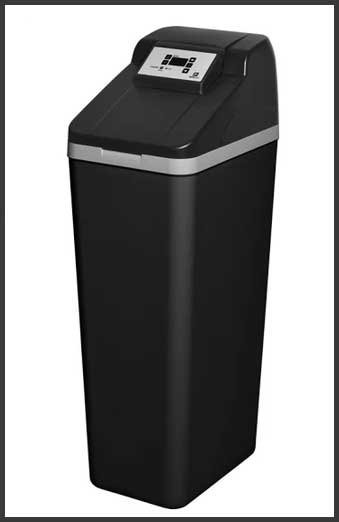
When I moved into my new home, I noticed something was off.
My dishes had white spots, my skin felt like sandpaper after showers, and my coffee maker was clogging up faster than I could brew a pot.
A quick water test confirmed my suspicions: hard water was the culprit, with a grain per gallon (gpg) level of 15—well above the “soft” threshold.
I knew I needed a solution, and after researching, I landed on the NorthStar NSC31, a single-tank model designed for households like mine with 1-5 people.
Installing the NorthStar was a breeze with the help of a local plumber.
The system came with everything needed, including a bypass valve and drain hose, making setup straightforward. Within a day, I noticed a difference.
My shower water felt silkier, and my hair wasn’t as brittle. The real test came with laundry—my towels, once stiff as cardboard, were fluffy again. The NSC31’s AutoSense technology impressed me, adjusting regeneration cycles based on my water usage, which meant I wasn’t wasting salt or water.
The control panel, with its backlit LCD, was intuitive, letting me tweak settings without a manual.
One standout feature was the “Look Ahead” technology, which predicts water usage to optimize regeneration.
This saved me from the hassle of constant monitoring. However, I did run into a minor hiccup when the low-salt indicator blinked earlier than expected, but a quick call to NorthStar’s support sorted it out—they suggested checking the brine tank for salt bridging, which I’ll cover later. Overall, my experience has been overwhelmingly positive, and the NorthStar has made hard water a distant memory.
Pros of The NorthStar Water Softener
- High Efficiency with AutoSense Technology
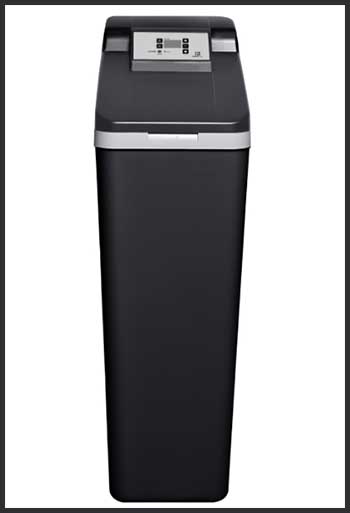
The NorthStar’s AutoSense technology is a lifesaver.
Unlike older systems that regenerate on a fixed schedule, this one tracks your actual water usage and only regenerates when necessary.
In my house, with three people and moderate water use, this has cut down on salt and water waste significantly.
I’ve noticed I’m refilling the brine tank less often than I expected—about once every six weeks.
This efficiency not only saves money but also feels better for the environment, especially since I’m not dumping excess brine into the wastewater system.
- User-Friendly Interface
I’m no tech wizard, but the NorthStar’s control panel is a breeze to navigate. The LCD screen displays everything from water hardness to regeneration times, and the buttons are straightforward. I can check how many gallons I’ve used or when the next regeneration is due without breaking a sweat.
The “Look Ahead” feature lets me fine-tune settings based on my household’s habits, which is perfect for when we have guests or use more water during the holidays.
- Durable Build Quality
NorthStar’s been in the game since 1925, and their systems feel like they’re built to last. The NSC31’s tank has an extra lining to prevent corrosion, and the resin bed agitator keeps things moving to avoid buildup of iron or dirt.
I’ve had mine for over a year, and it’s still running like day one. The 10-year warranty on the tank and 3-year warranty on the electronics give me peace of mind, knowing I’m covered if something goes wrong.
- Compact Design for Small Spaces
Space was a concern in my garage, but the NSC31’s compact design fit perfectly. At 15 x 48 x 20.5 inches, it tucks neatly into a corner without hogging room. If you’re in a smaller home or apartment, this is a huge plus.
Even the dual-tank models, like the NST30ED, are designed to be space-efficient while delivering continuous soft water, which is great for larger households.
- NSF Certification for Reliability
The NorthStar NSC31 is NSF-certified, which means it’s been independently tested to actually do what it claims—remove hard water minerals effectively. This certification gave me confidence that I wasn’t just buying a fancy filter but a system that meets strict standards.
After using it for months, I can confirm my water tests show hardness levels down to nearly zero, and my appliances are thanking me.
Not-So-Good Parts of The NorthStar Water Softener
- Higher Upfront Cost
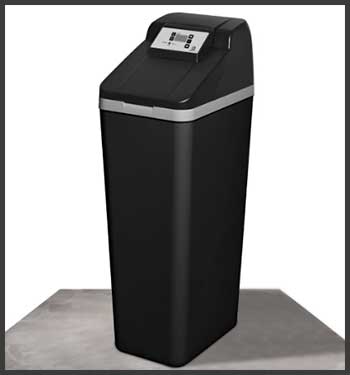
Let’s talk price. The NorthStar NSC31 set me back about $1,200, plus $350 for installation.
Compared to some budget models like the Fleck 5600SXT, which can cost as little as $600, it’s a bit of a splurge.
For smaller households with less severe hard water, you might wonder if the extra features justify the cost.
I’ve found the efficiency and durability worth it, but if you’re on a tight budget, the price tag could sting.
- Mixed Customer Service Experiences
While my call to NorthStar’s support was helpful, I’ve read reviews that paint a different picture. Some users report being hung up on or dealing with long wait times, especially during peak periods.
One Amazon review for the NSC40UD1 mentioned a leaky discharge hose that wasn’t resolved quickly, which is frustrating when you’re shelling out for a premium system. My advice? Keep your warranty info handy and be persistent if you need help.
- Limited Model Variety
NorthStar doesn’t have the biggest lineup. While they offer solid single- and dual-tank options, brands like SoftPro or Culligan have more models tailored to specific needs, like high iron content or commercial use.
If your water has unique issues—like high iron above 5 ppm—you might need to look elsewhere or add a separate filter. For my moderately hard water, the NSC31 was perfect, but I wish there were more choices for specialized cases.
- Salt Bridging Issues
Occasionally, I’ve noticed salt bridging in the brine tank, where salt clumps together and prevents proper regeneration. This isn’t unique to NorthStar, but it’s a hassle. I had to break up the bridge with a broom handle once, which wasn’t a big deal but felt like an unnecessary chore.
Regular checks can prevent this, but it’s something to watch for, especially if you use crystallized salt instead of pellets.
Maintenance Tips For Your NorthStar Water Softener
- Check the Brine Tank Monthly
You’ll need to keep an eye on the salt level in the brine tank to ensure your system runs smoothly. I check mine every four to six weeks, aiming to keep it at least half-full. A 40-pound bag of salt lasts my household about a month, depending on usage.
If you notice the salt level isn’t dropping, you might have a salt bridge. Gently break it up with a stick or broom handle, but don’t go Hulk-mode—you don’t want to damage the tank.
- Clean the Resin Bed Periodically
To keep the resin bed in top shape, NorthStar recommends adding a cleaning solution every three to four months. I use a resin cleaner like Iron Out, which is easy to pour into the brine tank during a regeneration cycle.
This prevents mold, mildew, or iron buildup, especially if your water has some iron content. It takes less than 10 minutes, and I’ve found it keeps the system running efficiently.
- Schedule Regeneration for Off-Peak Hours
The NorthStar’s AutoSense technology is great, but I like to set regeneration cycles for 2 a.m. when no one’s using water. This avoids any chance of hard water sneaking through during a shower or laundry load. You can program this via the control panel, and it’s a set-it-and-forget-it deal.
If you have a dual-tank model like the NST30ED, this is less of an issue since one tank is always softening while the other regenerates.
- Inspect for Leaks and Wear
Every few months, I give my system a quick once-over for leaks or wear, especially around the discharge hose and valve connections. One user review mentioned a persistent leak that required a head replacement, so it’s worth being proactive.
If you spot anything funky, call a plumber or NorthStar’s support to address it before it becomes a bigger problem. A little vigilance goes a long way.
- Test Your Water Regularly
Even with a great system, I test my water every six months using a hardness test strip to ensure the NorthStar is doing its job. You can grab these strips for cheap online or at hardware stores.
My tests consistently show near-zero hardness, but if you notice a slip, it might mean the resin bed needs cleaning or the system needs a tweak. This habit has kept my system on point.
How NorthStar Stacks Up Against Other Brands?
I’ve put my NorthStar NSC31 head-to-head with four popular competitors—Genesis, Sterling, Hague, and Novo—to help you decide which water softener suits your needs. Each brand has its strengths, but NorthStar’s balance of efficiency and ease of use makes it a standout for most households like mine.
- NorthStar Vs. Genesis Water Softener
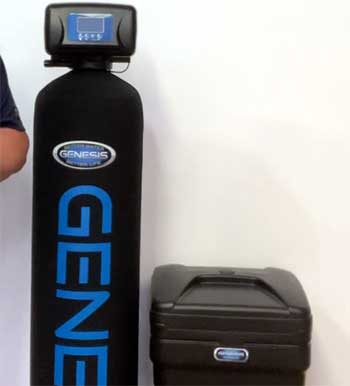
Genesis offers high-capacity systems like the Genesis 2, which boasts up to 64,000 grains, outpacing NorthStar’s NSC31 at 42,055 grains.
This makes Genesis ideal for larger families or homes with severe hard water (20+ gpg).
Their dual-tank design ensures uninterrupted soft water, unlike my single-tank NorthStar, which pauses during regeneration.
However, Genesis systems start around $1,500, compared to my $1,200 NorthStar, and their bulkier footprint (20 x 60 inches) was a dealbreaker for my cramped garage.
NorthStar’s AutoSense tech matches Genesis’s demand-initiated regeneration, but I found NorthStar’s simpler controls more user-friendly than Genesis’s app-based interface, which some users call finicky.
- NorthStar Vs. Sterling Water Softener
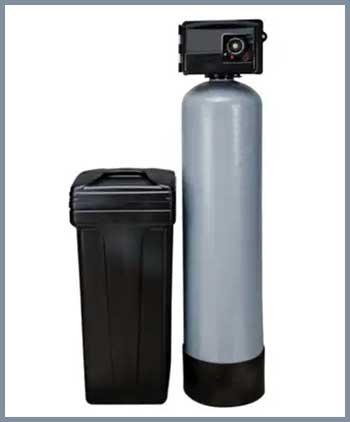
Sterling’s WS-48 model is a budget-friendly option at $700-$900, appealing if you’re watching your wallet.
It handles up to 48,000 grains, slightly more than NorthStar, and its mechanical valve is praised for durability in reviews on sites like WaterFilterGuru.
But Sterling lacks the smart features I love in my NorthStar, like “Look Ahead” tech or an LCD display.
Installation was also trickier with Sterling, requiring extra fittings not included, whereas NorthStar’s all-in-one kit streamlined my setup.
For small households with moderate hardness (10-15 gpg), NorthStar’s efficiency and compact size (15 x 48 inches) make it a better pick over Sterling’s basic, no-frills approach.
- NorthStar Vs. Hague Water Softener
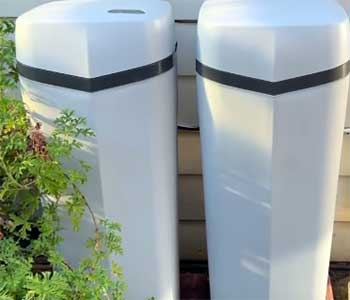
Hague’s WaterMax series is a premium contender, often priced at $2,000+, but it shines for complex water issues.
It removes up to 10 ppm of iron (double NorthStar’s 5 ppm) and offers customizable settings for unique water profiles, perfect for rural homes with well water.
Hague’s patented valve design minimizes water waste, but NorthStar’s AutoSense tech is nearly as efficient for my municipal water.
Hague’s systems are bulky, requiring 25 x 50 inches, and their proprietary parts hike repair costs.
My NorthStar’s NSF certification and 10-year tank warranty give me similar reliability at a lower price, making it a smarter choice for standard hard water needs.
- NorthStar Vs. Novo Water Softener
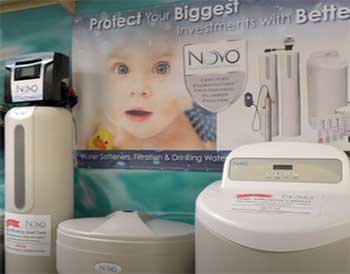
Novo’s Clear series, priced around $1,300, competes closely with NorthStar.
Its 40,000-grain capacity is comparable, and it includes a pre-filter for sediment, which NorthStar lacks unless you buy separately.
Novo’s sleek digital interface looks modern, but I found NorthStar’s backlit LCD easier to read in my dimly lit garage.
Novo’s single-tank design, like NorthStar’s, pauses during regeneration, but its water usage tracking isn’t as precise as NorthStar’s “Look Ahead” feature. Novo’s customer support gets mixed reviews, while my NorthStar support call was quick and helpful. For similar performance, NorthStar’s compact size and domestic manufacturing tipped the scales for me.
NorthStar holds its own against these brands, offering a sweet spot of efficiency, reliability, and ease for small to medium households with moderate hard water. If you need high iron removal or have a large family, Hague or Genesis might edge out, but NorthStar’s practical design and smart tech make it my go-to for most homes.
Frequently Asked Questions (FAQs)
With proper maintenance, a NorthStar water softener can last 10 to 15 years. The resin bed might need replacement after 5-10 years, depending on water quality and usage, but the tank itself is built to last, backed by a 10-year warranty. Regular cleaning and salt refills keep it running smoothly. I’ve had mine for over a year with no issues, and reviews suggest many users get a decade or more out of their systems.
NorthStar water softeners are manufactured in the United States, with over 95% of their parts made in-house, according to their website. This gives them a leg up on quality control compared to brands that outsource heavily. Knowing my NSC31 was made domestically gave me confidence in its build, and it’s held up well so far.
Some states and local municipalities, like California, Texas, and Arizona, have restrictions or bans on traditional salt-based water softeners due to environmental concerns about brine discharge into wastewater systems. For example, Santa Clarita, California, banned them in 2008, though dual-tank systems like NorthStar’s NST30ED are sometimes exempt because they use less water. Check local regulations before buying, as I did to ensure compliance in my area.
NorthStar recommends using salt pellets over crystallized salt to reduce the risk of salt bridging, which can clog the brine tank. I’ve stuck with pellets, and they dissolve more evenly, making maintenance easier. Crystallized salt is cheaper but can clump, as I learned the hard way early on. Pellets are pricier but worth it for consistent performance.
Why NorthStar Is My Go-To Choice?
After living with hard water’s annoyances, I’m thrilled with my NorthStar water softener. It’s transformed my home—smoother skin, cleaner dishes, and appliances that actually last. The efficiency, ease of use, and solid build make it a worthy investment.
If you’re tired of hard water woes, I urge you to consider NorthStar. It’s not perfect, but it’s reliable, and with a little care, it’ll keep your water soft and your home happy for years.
